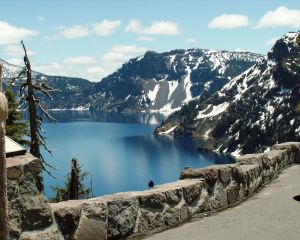AllCampgrounds Best Places for Summer Camping, Part 2: National Parks
Welcome to AllCampgrounds!
Today’s visit will bring us through some of the best national parks to enjoy camping in the summer season.
Last time, we highlighted KoA camp grounds, so it’s only natural we turn our attention this time to some great public lands, many allowing you to enjoy tent camping, cabins, and more.
RV parks and campgrounds will take the spotlight in our next post.
Grand Canyon: Who doesn’t love the Grand Canyon? This iconic mile-deep gorge in Arizona is probably the tent camping destination most folks associate with summer. Beware, though: the picturesque canyon hike is especially challenging in the heat! Lodging options include cabins, lodges, and an RV camp ground “village.” Below the canyon rim, you’ll get to stay at Phantom Ranch, which offers dormitories and cabins. Both Mather Campground and Desert View provide tent camping facilities.
Isle Royale: Isle Royale, in Michigan, is an amazing place to enjoy primitive and unspoiled wilderness. Accessible only by boat or seaplane, it encompasses all kinds of outdoor adventures: hiking, boating, and diving to see its famous shipwrecks. Camp ground facilities include tent camping sites, but groups are limited to 20 people. Sorry, RV campers: there’s no way to get your rig over to the Isle, though there are RV parks and camp grounds scattered throughout the mainland.
Sequoia & Kings Canyon National Park: California is famous as the home for some of the largest and oldest trees in North America, including the giant redwoods also known as sequoia. The park is home to General Sherman, the oldest tree on Earth, thought to be almost 3,000 years of age. Kings Canyon is actually a separate park, but contiguous with Sequoia, so you can easily visit both in the same camping trip. Camp grounds on-site are located within forested areas, some adjoining sequoia groves.
Katmai National Park & Preserve: Katmai National Park and Preserve was created to protect an enormous ash flow originally deposited in 1912 by the Novarupta Volcano. A full five million acres of the Alaskan wilderness, most of the preserve is naturally remote and rarely sees human visitors. Perhaps this is for the best, because Katmai boasts one of the largest populations of brown bears, attracted by summer salmon runs. Bear-watching and fishing are activities that, therefore, go hand in hand in Katmai. Check out the Angler’s Paradise Lodges for your park-wide camp grounds.
Crater Lake National Park: Crater Lake is one of the most striking water features in North America, and that’s saying something. Nearly pollutant-free, this salty, crystal blue lake was formed by the collapse of a nearby volcano and now forms the center of a terrific Oregon park. It also happens to be at the crossroads of a whole slew of national forests, a wildlife refuge, and a volcano observatory. Be cautious of the area’s fierce winters!
Jackson Hole: Jackson Hole Mountain Resort in Wyoming isn’t really a national park, but it occupies a terrific location, like Crater Lake above. In addition to a convenient run to Grand Teton National Park and Yellowstone National Park, it’s also near an elk reserve where 10,000 or more of the majestic beasts winter every year. There’s even the Bridger-Teton National Forest a short distance away. With so many attractions, you can bet that top quality tent camping and RV camping is spread throughout the area.


